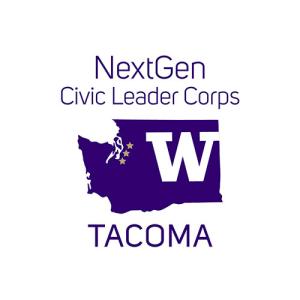Abrahamson works to clean up mining aftermath
Twa-le Abrahamson, '02, air quality coordinator for the Spokane Tribe of Indians, is working to spread awareness of the hazardous legacy of the Midnite Mine on the Spokane Reservation.
The last uranium mine on the Spokane Indian Reservation shut down in 1981, when Twa-le Abrahamson (IAS ‘02) was little more than a year old.
Yet, the mining operation, which ripped radioactive rocks from the earth to power nuclear plants, has clawed at Abrahamson her entire adult life.
For more than a decade, the UW Tacoma graduate has worked to spread awareness of the hazardous legacy of the Midnite Mine and to mobilize tribal members to get involved in its clean-up as a Superfund site.
It’s a journey that has taken Abrahamson, 32, from youth organizer and college student to radio producer and environmental activist.
Today, she’s the air quality coordinator for the Spokane Tribe of Indians.
“It’s impacted my family and families across the reservation, as far as health, the loss of elders, and physical, environmental damage,” Abrahamson said of the mine.
Uranium mining was a quiet backdrop to Abrahamson’s childhood on the Spokane reservation in Eastern Washington. The mine was one of the few sources of jobs for reservation residents, including her mother and grandfather.
Unaware of uranium hazards
Back then, she said, community members didn’t know about the health effects of uranium, that exposure to the hard metal is associated with respiratory problems, kidney damage and an increased risk of cancer.
“We don’t have a lot of tribal members that have the technical expertise to address the mine,” said Abrahamson.
She believes that fact, coupled with the reservation’s remote location in the Selkirk Mountains, has made it easier to drag out the clean-up process. Although the federal government named the Midnite Mine a Superfund site in 2000, the clean-up won’t begin until conclusion of the current two-year design phase.
In 2001, Abrahamson finished her community college studies and transferred to UW Tacoma. She had one goal: gain the knowledge to understand the environmental science and legal wranglings of the clean-up process, the mine and its health impacts.
Learning for a reason
In the UW Tacoma environmental studies program, she learned the chemistry of heavy metals and radionuclides — a radioactive form of an element — and how they interact in the environment and the human body. “It was a pathway to learn more, do research and to bring that research back to the community.”
Meanwhile, her mother, Deb Abrahamson, was launching a grass-roots organization called SHAWL (Sovereignty, Health, Air, Water, Land) Society to educate residents about the health and environmental effects of the mine.
SHAWL encouraged workers to file for federal compensation for radiation exposure. The group networked with the Navajo Nation and other tribes in the Southwest and Canada to learn how they had dealt with uranium mine contamination on their reservations.
The younger Abrahamson played an active role in SHAWL, regularly making the four-hour drive in a “beater” car from Tacoma to Spokane to attend meetings. At the university, she had access to the scientific data and articles to build a database on uranium and environmental restoration.
Information as power
“We wanted to get as much information as possible to the community so they could be involved in the Superfund public comment period, in the decision-making and how the mine was cleaned up,” Abrahamson said.
Part of her longstanding charge with SHAWL has been to involve youth. Initially, the group surveyed middle and high school students on their awareness of the mine, and helped bring curriculum on uranium and radiation into classrooms.
Abrahamson also learned radio production and journalism skills, which she shared with teens and college students. Their efforts led to Inner Tribal Beat, a Native American music and news show that continues to broadcast on KYRS radio, on 92.3 FM and 88.1 FM in the Spokane area.
The program showcases Native American musicians in a range of genres, from hip-hop to rock to traditional Indian. In between the music, listeners hear about the latest Superfund activities, along with interviews and other tribal news.
Restoring the land
“The media aspect has been huge,” she said. “Involving young people and using their interest and their strengths to get the message out about our issues has been a way to outreach to the community.”
As the tribe’s air quality coordinator, Abrahamson participates in technical meetings to ensure community members won’t be exposed to dust or sludge when the clean-up begins. She’s starting a program to test residential and commercial buildings on the reservation for the presence of radon, an invisible, radioactive gas that causes cancer.
She worries, not only about the mine workers and their families, but for future generations. That includes her 14-year-old daughter, Maliah.
“We want to protect and leave that land in a better condition than it is now for our children,” she said.



